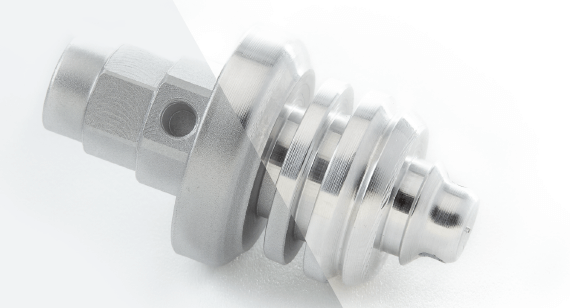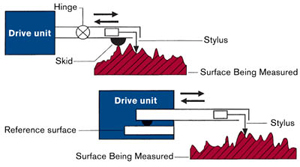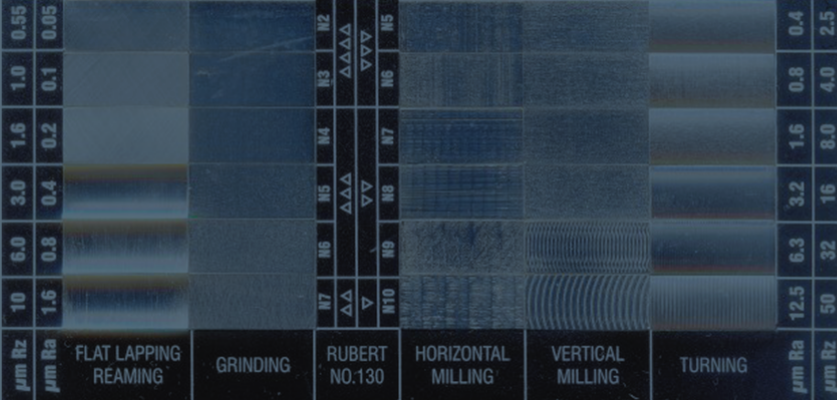Table of Contents
- Surface Finish: The Importance of Getting it Right
- 1. Surface Finish Affects Functionality
- 2. Surface Finish Affects Appearance
- 3. Surface Finish Affects Corrosion Resistance
- 4. Surface Finish Affects Cleanliness
- 5. Surface Finish Affects Sealability
- 6. Surface Finish Affects Cost
- 7. Surface Finish Affects Durability
- 8. Surface Finish Affects Efficiency
- 9. Surface Finish Affects Safety
- 10. Surface Finish Affects Customer Satisfaction
- Conclusion
- Frequently Asked Questions
When it comes to manufacturing and engineering, surface finish plays a crucial role in determining the success of a product. In simple terms, surface finish refers to the texture and quality of a material’s exterior. Although it may seem like a minor detail, surface finish can impact a product’s performance, durability, and overall appearance.
From enhancing a product’s functionality to improving its aesthetic appeal, the importance of surface finish cannot be overstated. In this article, we will delve into the reasons why surface finish is crucial in the manufacturing industry and explore the various techniques used to achieve the desired finish. So, buckle up and get ready to discover the impact of surface finish on the products we use every day.
Surface finish is important for various reasons. First, it affects the appearance of the product. A rough finish may make the product look cheap and poorly made. Second, it can affect the functionality of the product. For example, a smooth surface finish on a bearing reduces friction and wear, extending its lifespan. Finally, certain surface finishes can improve corrosion resistance, making the product more durable. In short, surface finish is a crucial factor in determining the quality and performance of a product.
Surface Finish: The Importance of Getting it Right
1. Surface Finish Affects Functionality
The surface finish of a product can have a significant impact on its functionality. When a surface finish is too rough, it can cause friction and wear, leading to premature failure of the product. On the other hand, a surface finish that is too smooth can cause parts to slip, leading to poor performance.
For example, in the aerospace industry, the surface finish of turbine blades is critical to their performance. A rough surface can cause air turbulence, leading to more fuel consumption, while a smooth surface can cause the blades to slip, leading to a loss of power.
2. Surface Finish Affects Appearance
The surface finish of a product is also important for its appearance. A rough surface can make a product look unfinished, while a smooth surface can give it a polished look.
For example, in the automotive industry, the surface finish of a car body is critical to its appearance. A smooth surface with a high gloss finish can make a car look sleek and modern, while a rough surface can make it look dull and unrefined.
3. Surface Finish Affects Corrosion Resistance
The surface finish of a product can also affect its resistance to corrosion. A rough surface can provide more places for corrosion to start, while a smooth surface with a protective coating can prevent corrosion.
For example, in the marine industry, the surface finish of a boat’s hull is critical to its resistance to corrosion. A smooth surface with a protective coating can prevent corrosion from seawater, while a rough surface can provide a place for corrosion to start.
4. Surface Finish Affects Cleanliness
The surface finish of a product can also affect its cleanliness. A rough surface can provide places for dirt and bacteria to accumulate, while a smooth surface can be easily cleaned.
For example, in the food industry, the surface finish of processing equipment is critical to its cleanliness. A smooth surface with a low roughness average (Ra) can be easily cleaned and sanitized, while a rough surface can provide a place for bacteria to grow.
5. Surface Finish Affects Sealability
The surface finish of a product can also affect its sealability. A rough surface can make it difficult to create a proper seal, while a smooth surface can allow for a tight seal.
For example, in the medical industry, the surface finish of implantable devices is critical to their sealability. A smooth surface with a low Ra can allow for a tight seal, preventing bacteria from entering the body.
6. Surface Finish Affects Cost
The surface finish of a product can also affect its cost. A smooth surface with a high gloss finish can be more expensive to produce than a rough surface.
For example, in the consumer goods industry, the surface finish of a product can affect its price point. A product with a high-end finish may be more expensive than a product with a more basic finish.
7. Surface Finish Affects Durability
The surface finish of a product can also affect its durability. A rough surface can cause premature wear, while a smooth surface can increase the product’s lifespan.
For example, in the construction industry, the surface finish of a building’s exterior is critical to its durability. A smooth surface with a durable coating can increase the building’s lifespan, while a rough surface can cause premature wear.
8. Surface Finish Affects Efficiency
The surface finish of a product can also affect its efficiency. A smooth surface can reduce friction and improve performance, while a rough surface can cause drag and decrease efficiency.
For example, in the manufacturing industry, the surface finish of machine parts is critical to their efficiency. A smooth surface with a low Ra can reduce friction and improve performance, while a rough surface can cause drag and decrease efficiency.
9. Surface Finish Affects Safety
The surface finish of a product can also affect its safety. A rough surface can cause injury, while a smooth surface can reduce the risk of accidents.
For example, in the transportation industry, the surface finish of a road is critical to safety. A smooth surface can reduce the risk of accidents, while a rough surface can cause loss of traction and accidents.
10. Surface Finish Affects Customer Satisfaction
The surface finish of a product can also affect customer satisfaction. A smooth surface with a high gloss finish can make a product look expensive and high-quality, leading to satisfied customers.
For example, in the luxury goods industry, the surface finish of a product is critical to customer satisfaction. A smooth surface with a high gloss finish can make a product look expensive and high-quality, leading to satisfied customers.
Conclusion
The surface finish of a product is critical to its functionality, appearance, corrosion resistance, cleanliness, sealability, cost, durability, efficiency, safety, and customer satisfaction. Getting the surface finish right requires attention to detail and the use of appropriate techniques and materials.
Frequently Asked Questions
Surface finish is a crucial factor that impacts the functionality and aesthetics of a product. It determines how a product looks, feels, and performs. In this section, we will address some common questions about why surface finish is important.
What is surface finish, and why is it important?
Surface finish refers to the texture, roughness, glossiness, and other properties of a material’s surface. It is essential because it affects the product’s functionality, durability, and appearance. For example, a smooth surface finish can reduce friction and wear, improve corrosion resistance, and enhance the product’s aesthetic appeal. Conversely, a rough or uneven surface can impair the product’s performance and durability, and make it less appealing to customers.
Therefore, manufacturers need to choose the right surface finish based on the product’s intended use, design, and target audience. They must also ensure that the surface finish is consistent, uniform, and free from defects to maintain the product’s quality and reputation.
What are the benefits of a high-quality surface finish?
A high-quality surface finish offers many benefits, such as:
- Improved functionality: A smooth surface finish can reduce friction, wear, and noise, and enhance the product’s performance and efficiency.
- Better aesthetics: A polished or textured surface can make the product look more attractive and professional, and differentiate it from competitors.
- Higher value perception: A product with a high-quality surface finish is often perceived as more valuable, premium, and reliable by customers, which can increase its price and demand.
- Increased durability: A surface finish that resists scratches, stains, and corrosion can prolong the product’s lifespan and reduce maintenance costs.
Therefore, investing in a high-quality surface finish can pay off in the long run by enhancing the product’s functionality, aesthetics, and value.
How do you measure surface finish?
Surface finish can be measured using various techniques, such as:
- Visual inspection: This involves examining the surface with the naked eye or a magnifying glass to detect any defects, scratches, or irregularities.
- Roughness measurement: This involves using a profilometer or a stylus instrument to measure the surface’s roughness, waviness, and other parameters.
- Gloss measurement: This involves using a gloss meter or a spectrophotometer to measure the surface’s reflectance, haze, and other optical properties.
- Color measurement: This involves using a colorimeter or a spectrophotometer to measure the surface’s color, hue, and saturation.
By measuring the surface finish, manufacturers can ensure that it meets the desired specifications and standards and identify any defects or deviations that need to be corrected.
What factors affect surface finish?
Several factors can affect surface finish, such as:
- The type of material: Different materials have different surface properties, such as hardness, porosity, and texture, which can affect the surface finish.
- The manufacturing process: Different processes, such as machining, polishing, or coating, can produce different surface finishes, depending on the tools, techniques, and parameters used.
- The design requirements: The product’s intended use, functionality, and aesthetics can dictate the type of surface finish needed, such as smoothness, glossiness, or texture.
- The environmental conditions: The exposure to heat, humidity, chemicals, or other factors can affect the surface finish and cause degradation or corrosion over time.
Therefore, manufacturers need to consider these factors when selecting and applying the surface finish to ensure that it meets the product’s requirements and expectations.
How can you improve surface finish quality?
To improve surface finish quality, manufacturers can take several steps, such as:
- Optimizing the manufacturing process: By selecting the right tools, parameters, and techniques, manufacturers can achieve the desired surface finish with minimal defects or deviations.
- Using high-quality materials: By using materials with consistent properties and low impurities, manufacturers can improve the surface finish’s uniformity and durability.
- Inspecting and testing the surface finish: By measuring and evaluating the surface finish using various techniques, manufacturers can identify any defects, deviations, or improvements needed.
- Training and educating the workforce: By providing proper training and guidance to the workers involved in the surface finishing process, manufacturers can ensure that they follow the best practices and standards and minimize errors or inconsistencies.
By improving the surface finish quality, manufacturers can enhance the product’s functionality, aesthetics, and value and satisfy the customers’ expectations and requirements.
In conclusion, surface finish is a critical aspect of manufacturing and engineering that should not be overlooked. The surface finish of a product can affect its functionality, appearance, and durability. A poor surface finish can lead to a variety of issues, including roughness, corrosion, and fatigue failure. On the other hand, a high-quality surface finish can improve the product’s performance, reduce friction, and increase its lifespan.
Moreover, surface finish plays a significant role in industries such as aerospace, automotive, and medical where precision and quality are paramount. Achieving the desired surface finish requires careful consideration of factors such as material properties, manufacturing processes, and tooling. It is essential to work with experienced professionals who understand the importance of surface finish and can deliver the desired results.
In summary, surface finish is a crucial factor in the performance and quality of a product. It affects the appearance, durability, and functionality of the item, making it an essential consideration in manufacturing and engineering. By prioritizing surface finish, businesses can ensure the satisfaction of their customers and the longevity of their products.
Request a quote today!
[contact-form-7 id="1578" title="Contact form"]
Please compress the file into a ZIP or RAR file before uploading. Alternatively, send through your RFQ by email.
enquires@unitymanufacture.com





